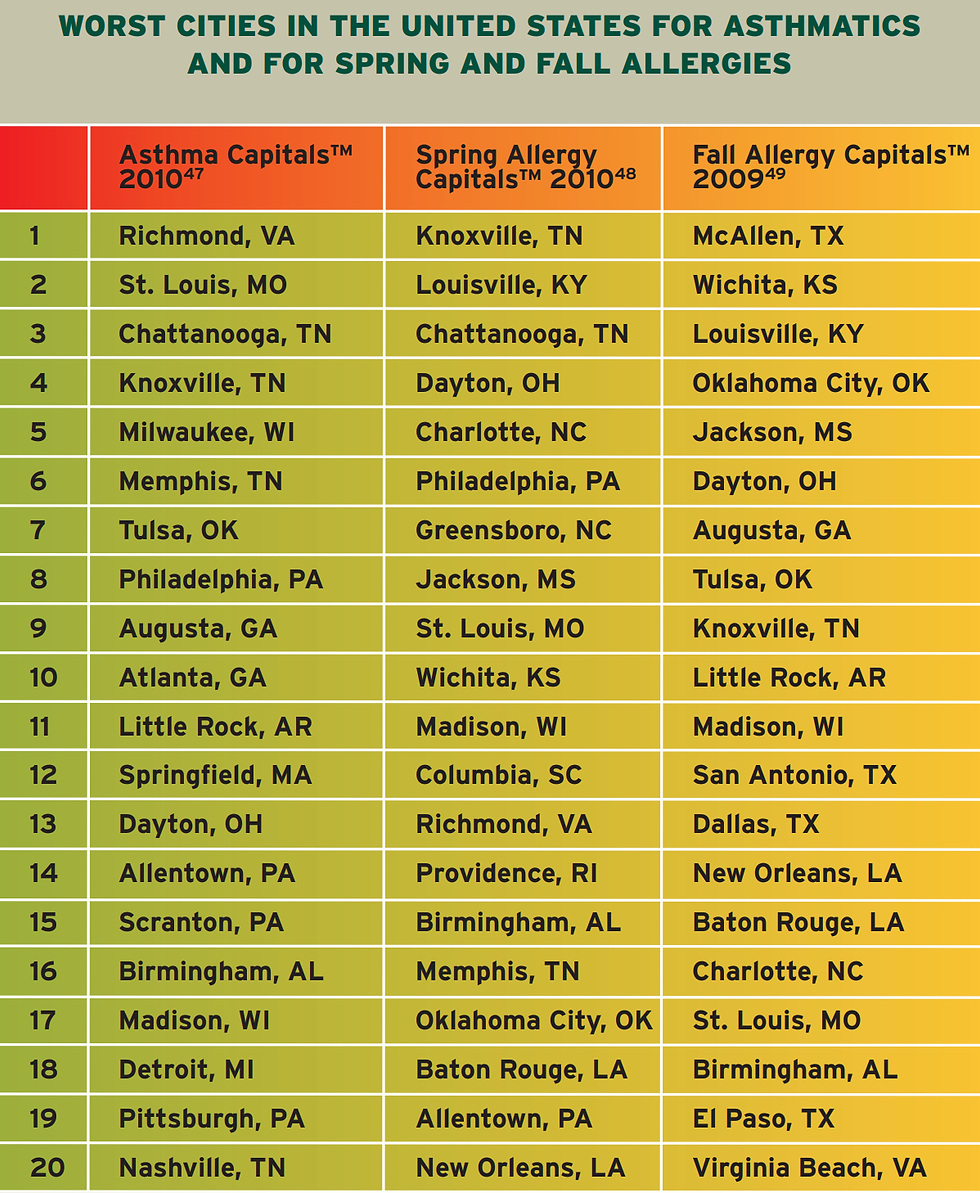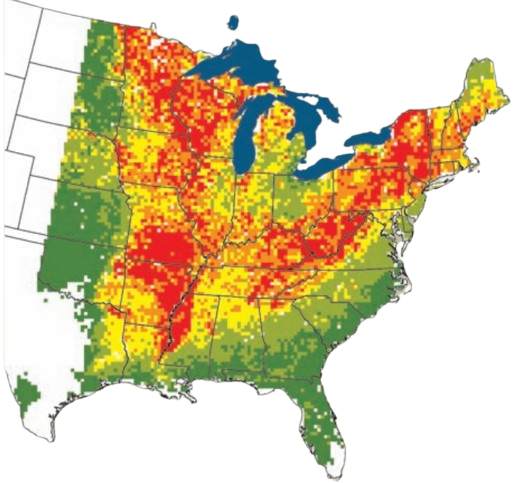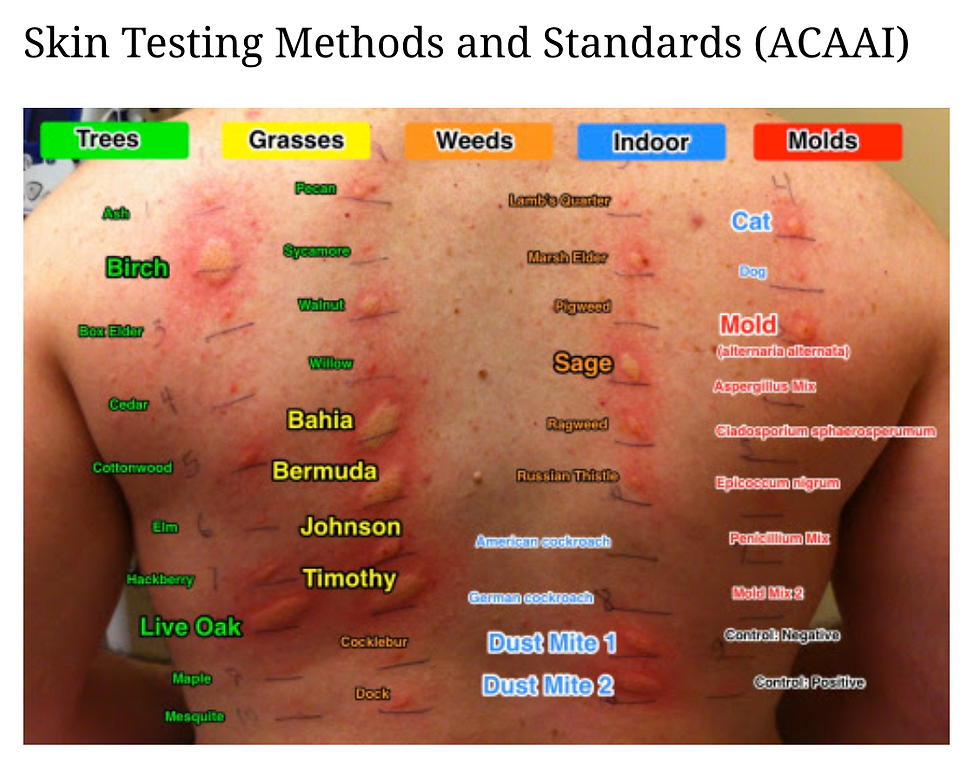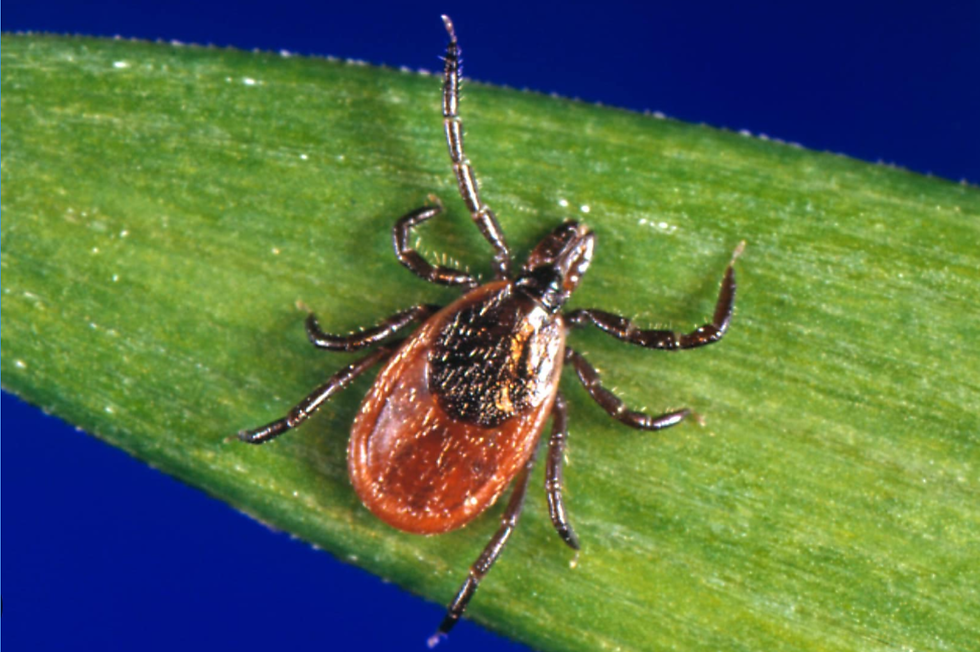All I Want for Christmas Is... Relief from Allergies?!
- sjpdragonlady
- Dec 3, 2023
- 11 min read
Updated: Jan 29, 2024

Women's Health
Are allergies really that serious?
More than 50 million Americans adults and children suffer from allergies, which are the sixth leading cause of chronic illness in the US. According to the Center for Disease Control (CDC), approximately 26% of adults and 19% of children experience seasonal allergies. The American Public Health Association estimates that allergies cause 3.8 million missed days of school and work yearly. The annual medical cost for treatment of hayfever in the US is between $1.4-6 billion, with half of that spent on prescription medications. This breaks down to an average lifetime cost of $16,000 per seasonal allergy patient! Allergic disorders have become more common in the past 60 years. The World Health Organization (WHO) estimates that by 2050, more than half the people on the planet (approximately 4 billion people) will suffer from at least one allergy. Allergies are getting more serious as years go by!

Advantage Pro Services, Inc.
What causes allergies?

Primeview
Allergies are a case of "mistaken identity". An irritant (allergen) enters the body, and the immune system, believing that the allergen is a harmful invader (it is not!), mistakenly overreacts to it by producing antibodies. The immune system cranks out IgE immunoglobulin antibodies, as well as mast cell chemicals such as histamine, to attack the allergic trigger. In the case of a disease such as influenza or gastroenteritis, these cells and chemicals would appropriately destroy the germs responsible for the illness. In the absence of infection, histamine causes reddening and itching of tissues in the nose, throat, airways, skin and eyes, and nearby blood vessels can become enlarged, leading to swelling from excess fluid. It is believed that this tendency of the immune system to overreact to harmless substances is genetic. Common triggers for environmental allergies include pollens, fungal spores, insects, dust mites and animal dander. While dust and dander tend to be year-round, pollen, fungus and insects are generally considered seasonal triggers for allergies.
Who Is affected by allergies?

Boogie Wipes
Allergies can affect anyone, regardless of sex, race, and socioeconomic status. Children are more likely to be affected by allergies. According to USA Facts, adult females and people between the ages of 45-64 years are more likely to be impacted. People with a history of asthma or eczema are higher risk to develop hayfever. Those with a family history of allergies, asthma, hives or eczema may also be more likely to develop allergies themselves. Allergies may be more dangerous to people who live in regions with high levels of air pollution, as they are exposed to a "double whammy" and may have worse symptoms. According to research presented by Yale Climate Connections, this may excessively impact minorities because they are more likely to live in communities with poor quality air due to vehicle traffic and industrial pollution. Allergies can trigger asthma, and African Americans are three times more likely than Caucasians to be hospitalized with and to die of asthma. Puerto Ricans have the highest rates of asthma attacks and related deaths in the US. Making it to a certain age without developing allergies will not prevent people from developing allergies later in life. Each year, many new people get allergies who never had them before.

Asthma and Allergy Foundation of America (AAFA)
Is allergy season actually getting longer?

Asthma and Allergy Foundation of America (AAFA)
Allergy season is indeed getting longer, and is also becoming more severe! Today, allergy season starts 20 days earlier and wraps up 10 days later than it did 30 years ago. During the last 30 years, North American pollen concentrations have increased by about 20%. For 75% of allergy sufferers,ragweed is the primariy trigger for seasonal environmental allergies, and an allergy season that is 30 days longer may increase ragweed pollen counts by 55%. This effect is happening across the US, but the Southeast and Midwest are particularly affected.
There are several reasons for the longer allergy season and higher pollen production. Warmer weather triggers plants to bloom and produce pollen. The USA National Phenology Network reports that spring is arriving several days to several weeks earlier now than in 1990. As weather heats up and spring arrives earlier, growing seasons are longer and the parts of the country where specific plants are able to grow expands. The ranges where many plants can grow are spreading northward. Milder winter temperatures cause plants to bloom and pollinate early, and plants may continue to make pollen instead of going dormant during the winter. According to the Asthma and Allergy Foundation of America, warmer weather may particularly favor the growth of trees with more allergenic pollen. Highly allergenic oak and hickory trees may spread more quickly than less allergenic pine, spruce and fir trees
Learn More About the Impact of Increasing Temperature on Trees and Birds

Forestry Service, USDA
In addition, greenhouse gas emissions increase levels of carbon dioxide in the atmosphere. Carbon dioxide is essential for plant growth. As carbon dioxide levels increase, plants grow faster and larger, and increase the production and release of pollen. Changes in patterns of thunderstormes, air pressure, wind, precipitation and humidity also significantly impact pollen distribution. Wind and storms break pollen spores into smaller pieces which can more easily enter the airways and lungs. Each ragweed plant is able to produce approximately one billion grains of pollen each year, which can be carried by the wind up to 400 miles away from the plant. It has been suggested that if fossil fuel emissions continue to increase, ragweed pollen will increase between 60-100% (essentially doubling) by the year 2085.
Current Eastern US Tree Distribution 2100 Eastern US Tree Distribution With
High Greenhouse Gas Emission


Asthma and Allergy Foundation of America (AAFA)
Other environmental allergies, such as poison ivy, fungus and mold, may also be on the rise. Poison ivy is one of the top ten "medically problematic" plants in the US, causing more than 350,000 cases of contact dermatitis each year. Researchers at Duke University studied the effect of increasing carbon dioxide levels on poison ivy plants. Plants exposed to higher levels of carbon dioxide grew faster and made a form of urushiol (the chemical in poison ivy that triggers allergic reactions) that caused a more severe allergic reaction. The levels of carbon dioxide tested were similar to those expected by 2050 if fossil fuel emissions are not controlled.
Many types of fungus, including mold, release spores that trigger allergies and asthma, indoors and outdoors. There are many environmental factors that increase spore quantities. One study determined that doubling carbon dioxide levels in the atmosphere caused a four-fold increase in fungal spores released from dead leaves. When there is heavy rainfall or flooding, moisture triggers mold growth and spore production and leads to increased allergies. There has been an increased frequency and severity of hurricanes in the past 40 years, which may contribute to increased mold growth and allergies. As temperatures increase, hot and dry conditions in some parts of the United States will lead to increased air conditioner use. If incorrectly installed or if filters are not regularly changed, this can also contribute to increased mold growth.
CBS News, New York
Great Handout from the Asthma and Allergy Foundation of America
What are the symptoms of allergies?
Sneezing
Coughing
Watery, itchy, or red eyes
Stuffy or runny nose
Skin and eyelid irritation
Nasal congestion
Wheezing
Difficulty breathing
IF YOU ARE HAVING DIFFICULTY BREATHING, GO TO THE EMERGENCY ROOM!
How can I determine what I am allergic to?
There are several different ways to figure out what you are allergic to. Sometimes it is as easy as avoiding something (can be easier said than done!) to see if symptoms improve when you are not exposed to that thing. There are several types of medical tests that are also done to determine a person's specific allergic triggers. Blood test panels can be done to test for very specific allergens. Each panel typically tests for a few common allergens, so it is important to have a sense of what the allergic triggers might be. Blood tests can guide patients, but it is possible to have an abnormal blood test for a specific allergen and not have any problem with that trigger in the real world. On the other hand, it is possible to have a negative blood test and still respond negatively to an allergen. A more accurate (but slightly more invasive test) is a skin prick test. This consists of a number of small injections of different allergens into the skin of the upper back. A physician then monitors the skin where the injections were given to see if there are any reactions to specific allergens. A negative skin reaction is very good at ruling out allergic triggers, while a positive one is about 50% accurate. These tests can be ordered by an allergist, family physician or internist.

Allergy & Immunology Specialists, Phoenix, AZ
How can I treat my allergies?
There are many over the counter and prescription options for treating allergies. They include the following:
*Eye drops help with symptoms of allergic conjunctivitis or eye allergies. They are a great option for people who have primarily eye allergies. They generally have less side effects than oral (by mouth) medications.
*Nasal (nose) sprays, including steroid and antihistamine nasal sprays help ease nasal congestion and drainage. They are a great option for people who have primarily nasal allergies (sneezing, congestion, runny nose). They have some side effects but generally less than oral medications. Nasal sprays containing oxymetazoline (common in over the counter nasal sprays) should not be used for more than 2-3 days, as patients may then experience worsening congestion when the medication wears off (rebound congestion).
*Steroid and antistamine skin creams or ointments help with itchy skin rashes. These are generally well-tolerated although people can be allergic to some of these medications.
*Inhalers for patients who have asthma improve coughing and wheezing. Albuterol is fast acting and eases symptoms quickly. Patients who have frequent asthma attacks may also need to take preventive inhalers. Inhalers are generally well tolerated. Albuterol may make people feel a bit jittery. It is important to rinse out the mouth after using preventive inhalers containing steroids to prevent yeast infections in the mouth.
*Decongestants and antihistamines address a variety of allergy symptoms. They can be prescription or over the counter medications.They address more of a broad spectrum of symptoms. As they are oral medications, they may have more side effects than the above medications.
*Prescription medications like montelukast improve allergy symptoms by stabilizing the part of the immune system that is responsible for allergic reactions. They are oral medications, so address a wide variety of symptoms but have the potential to cause more side effects.
*For people who have severe allergy symptoms, a shot of steroids such as triamcinolone can help improve symptoms that aren't responding to other medications. The relief from a triamcinolone injection may last as long as 3 months, or one season. There are a number of side effects from steroid injections, but for some people this is a great option.
*Allergy desensitization injections (immunotherapy, or allergy shots) are generally given by allergy specialists and are intended to reduce reactions to particular allergens by injecting patients with tiny amounts of specific triggers. This helps a patient become more tolerant to an allergen and less likely to have a reaction to it when they encounter it in the "real world". Treatment may continue for 3-5 years. This is the most expensive option, but may keep allergies away permanently. Side effects can be significant, and can include an anaphylactic (severe allergic) reaction to the injections. They are usually given in an allergist's office so patients can be monitored for severe reactions after the shots.


Adobe Stock Freepik
What long-term problems are associated with allergies?
The Asthma and Allergy Foundation of America estimates that allergic rhinitis leads to 13.1 million doctors visits each year. Allergies are common triggers for asthma. It has been suggested that if the average environmental temperature is 2 degrees higher than normal, increasing pollen levels will increase children's asthma-related emergency room visits by up to 30% per year. Studies reported by Yale Climate Connections indicate that children perform less well on tests and have difficulty learning during times when the pollen count is high. People with allergies are also high risk for infections like bronchitis and sinusitis. Pollen allergies trigger production of sugar-containing mucus, which can feed germs and make infections harder to clear. Thankfully, most cases of bronchitis and sinusitis do NOT require antibiotics! However, it does take a lot of energy to fight of infections, which is exhausting!

Sinus Center Idaho
Can I do anything to prevent allergies?
There are many things that can be done to prevent allergies! The way that people care for themselves and the environment around them can lower the severity of their allergy symptoms.
Care for yourself:
*Do regular saline sinus rinses during allergy season to rinse away pollens
*Start taking allergy medications (if needed) a few weeks prior to allergy season
*Minimize outdoor time when the plants you are allergic to are in bloom
*Check local pollen counts and spend time outdoors when pollen counts are low
*Stay indoors when air quality reports indicate poor air quality
*Spend time outdoors in the morning when pollen counts are lower
*Wear a pollen filtering mask when you are outdoors on high pollen days
*Wear an N-95 mask when mowing the lawn or doing yard chores
*Shower after spending time out doors to clean pollen from skin
Care for your home:
*Wash bedding and clothing frequently to remove pollen that sticks to fabric
*Vacuum your house frequently to remove pollen that might track in on shoes
*Use an air filter in your home to clear pollen from the air
*Use an air conditioner on high pollen days; change out filter regularly
*Prevent mold by keeping indoor environments dry
*Dry areas thoroughly after a flood or leak
Care for the environment:
*Clear highly allergenic plants from your yard
*Select plants for your garden that don't produce airborne pollen
*Plant female trees and shrubs which don't produce pollen
Air Purifier/Filter

The Air Purifier Store
WebMD suggests eliminating these plants from your yard:
Flowers/herbs
Amaranth (pigweed), chamomile, chrysanthemums, daisies, ordinary sunflowers
Shrubs/vines
Cypress, jasmine vine, juniper, wisteria
Trees
Alder, ash (male), aspen (male), beech, birch, box elder (male), cedar (male), cottonwood (male), elm, hickory, red and silver maples (male), mulberry (male), oak, olive, palm (male), pecan, pine, poplar (male), sycamore, walnut, willow (male)
Grasses
Bermuda, fescue, Johnson, June, orchard, perennial rye, redtop, salt grass, sweet vernal, timothy
Weeds
Cocklebur, ragweed, Russian thistle, sagebrush
Ragweed

My Big Fat Grain Free Life
Which allergy forecast app is best?







Ember Opinion:
Allergy Plus is great at communicating what plants are blooming and what types of pollen are in the air during each different season, so you can see what allergies you have depending on when you feel worse, and what symptoms you have. Allergy Plus also breaks down pollen seasons when trees, ragweed, and grass pollen are spiking. In all it had a 4.8 rating. According to ratings, the app Pollen Wise did not have as many sensors so it might not be as useful depending on location. In all it had a 4.6 rating. The app Zyrtec Allergy Forecast was slow, and some people had trouble logging in, but one person commented that the app's ability to show when different plants are blooming in different seasons was so accurate, it led them to being diagnosed with certain allergies. In total it was rated 3.6. In my opinion Allergy Plus is the way to go for an allergy app, because there were very few complaints about slowness, lagging, or trouble using the app, unlike the others. It also provided more useful information for different seasons.
You can improve the health of the planet and yourself by planting low-allergy plants!
From Lawn Love, Low Allergy Trees:
1. Crabapple trees (Malus spp.)
2. Crepe myrtle (Lagerstroemia indica)
3. Dogwood trees (Cornus spp.)
4. Eastern redbud (Cercis canadensis)
5. Magnolia trees (Magnolia spp.)
6. Pear tree (Pyrus spp.)
7. Tulip tree (Liriodendron tulipifera)
From The Spruce, "No Pollen" Trees:
Acer rubrum 'October Glory’
Aspen (Populus tremuloides), cottonwood, poplar, and related trees
Boxelder (Acer negundo)
Cedar (Cedrus spp.)
Juniper (Juniperus virginiana)
Maidenhair (Ginkgo biloba)
Mulberry (Morus ssp.)
Swamp tupelo (Nyssa sylvatica)
White ash, green ash, etc. (Fraxinus spp.)
Yew(Taxus spp.)
Pink Perfection Flowering Crabapple Tree

Reparatucoche
From WebMD, Overall Good Plant Choices:
Flowers
Begonia, cactus, chenille, clematis, columbine, crocus, daffodil, dusty miller, geranium, hosta, impatiens, iris, lily, pansy, periwinkle, petunia, phlox, rose, salvia, snapdragon, thrift, tulip, verbena, zinnia
Hypoallergenic sunflowers
Apricot Twist (apricot with gold center), Infrared Mix (dark crimson, ruby, golden-reds), The Joker (showy red-and-yellow double blooms), Pro-Cut Bicolor (mahogany and yellow with black centers)
Shrubs
Azalea, boxwood (if clipped often), hibiscus, hydrangea, viburnum
Trees
Apple, cherry, Chinese fan palm (female), fern pine (female), dogwood, English holly (female), Bradford pear, crepe myrtle, hardy rubber tree, magnolia, pear, plum, red maple (female)
Grasses
St. Augustine
Azaleas

Southern Living
Hearty, Hypo-Allergenic Plants:

American Academy of Allergy, Asthma and Immunology
Learn more about allergies and advocate for healthy policies!
Minimizing carbon emissions can minimize allergies!
As much as possible, use clean, renewable energy. Burning fossil fuels releases carbon and other air pollutants that irritate the respiratory system, making people more susceptible to allergy symptoms

Treehugger





Comments